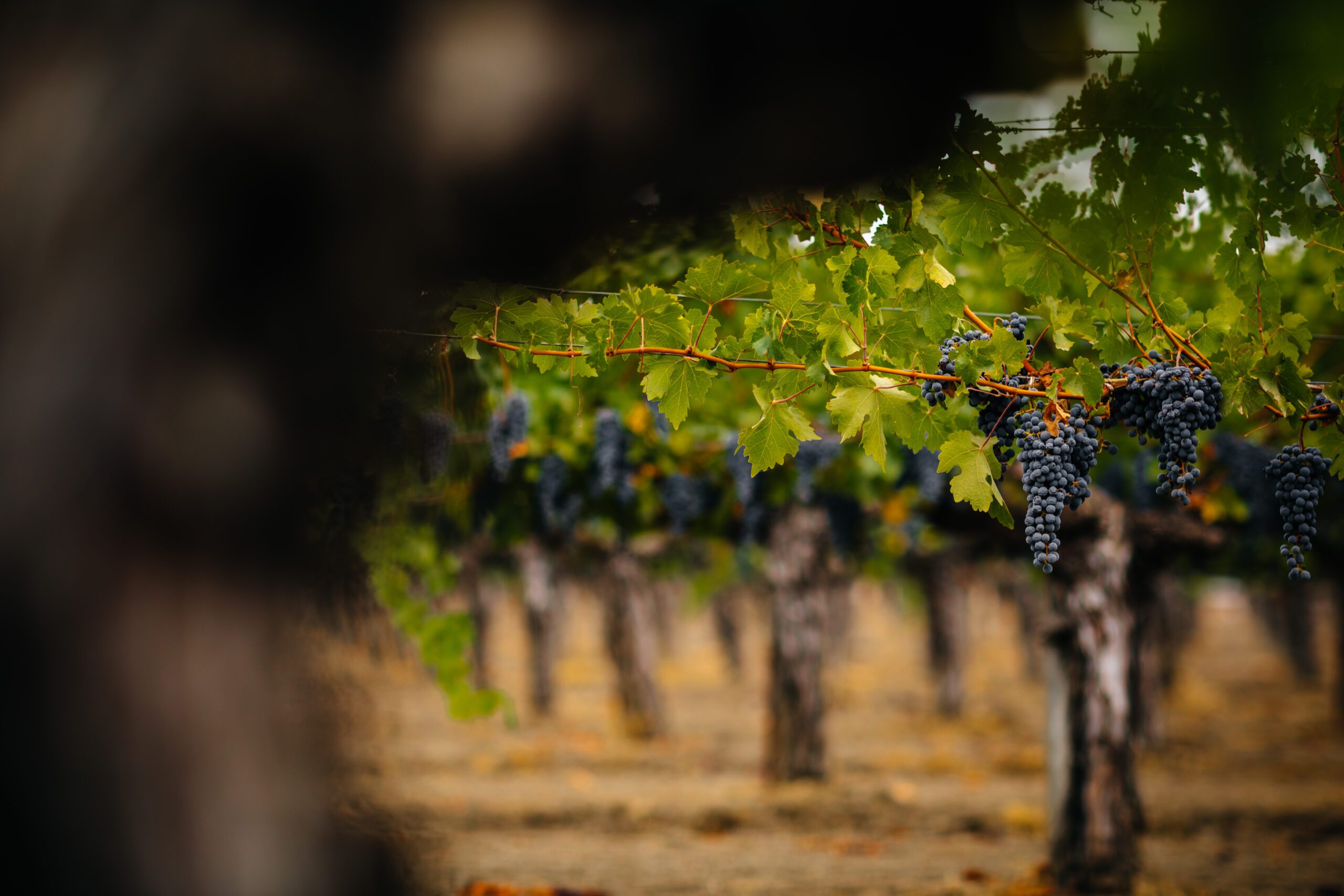Merlot

A part of the Frog’s Leap family since 1990, Merlot is one of the most complex wines that we make—and one of the most rewarding. The variety is a paradox: a red wine that is capable of tremendous power and complexity, but one that requires a softer, subtler approach to unlock its full potential. Achieving this balancing act is the core intent of our Merlot winegrowing.
Central to our task is proper site selection and careful viticulture. The right mixture of clay and gravel is essential to balance Merlot’s natural vigor while promoting deep roots, but this harmony only exists on about ten percent of our acreage–the Merlot has the smallest production of our core wines. In the growing season, careful and timely manipulation of the canopy is essential to guarantee the right mixture of sunlight and shade on the grapes—allowing full flavor development while protecting the grapes from excess heat and sun.
If we can strike this balance in the vineyard, the task in the cellar requires no special tricks—just appropriate restraint with extraction during fermentation and in our use of new oak, understanding that Merlot’s full charm is only slowly revealed—it’s the tortoise to Zin or Cabernet’s hare. Of all of our wines, the Merlot benefits the most from aeration upon opening. The reward for one’s effort is something special: power and refinement; rich plum, black cherry and sage aromas with an endless, supple texture. There really is nothing quite like it.
- Merlot is slow to develop in the glass – think of it as the “tortoise” to Zin or Cabernet’s “hare”—it requires patience and benefits significantly from aeration upon opening. Consider decanting.
- Merlot offers refined power; rich red plum and tart cherry — sage aromatics with supple, endless texture. It is a “red fruit” flavor profile compared to Cabernet’s “black fruit”.
- Merlot is food-friendly and offers versatility for vegetarian dishes, veal, chicken: this wine can solidly bridge the paring gap between Pinot Noir and Cabernet for diverse culinary applications.
Where We Grow Merlot (and Why)
- We’ve grown this wine in our Estate vineyards since 1990; It’s the smallest production among our “core” wines due to specific terroir requirements—only 10% of our vineyard land is suitable for it.
- Clay-gravel soil blends are essential for balancing the natural vigor of the vine while promoting deep rooting; we believe that precise soil composition is critical for quality in this grape varietal.
- Our Red Barn Vineyard soils along with careful canopy management ensures optimal sun/shade balance for flavor development without overexposure.
- We harvest at the appropriate time to provide moderate ripeness with preserved acidity.
- We look for restrained extraction: 5-10 day fermentation at 80°F, pressed at dryness (low to no residual sugar) to preserve the delicate red fruit character.
- We encourage native malolactic fermentation in barrel; 18-month aging in French and American oak (new to 5-year-old) plus concrete cubes.
- We deliberately apply minimal intervention in our winemaking approach —“no special tricks, just appropriate restraint”.
